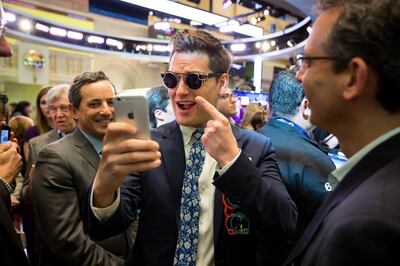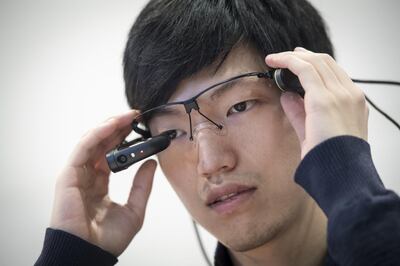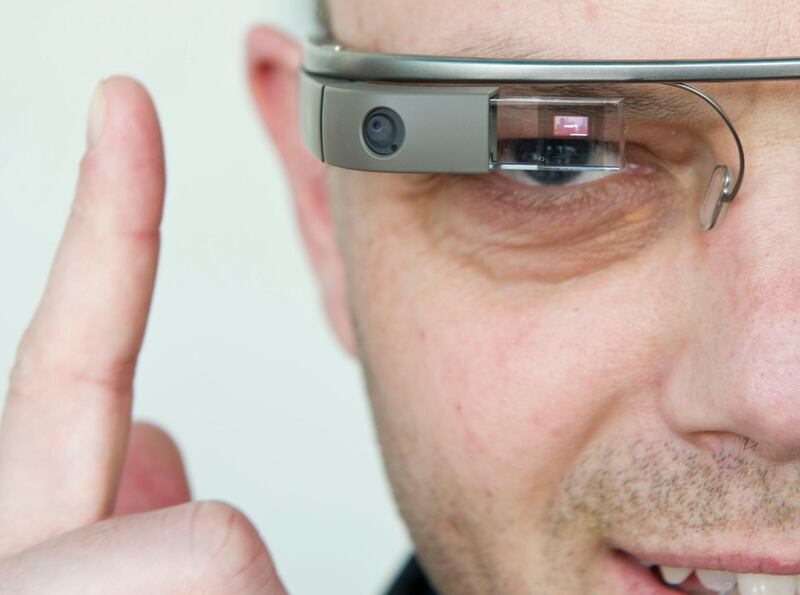New technology products are usually unveiled with extravagant flourishes and confident assertions that we’ll be dazzled by their capabilities. Firms choosing to launch a pair of smart glasses, however, have a tougher job on their hands. Previous attempts to get consumers interested in wearing tech-spectacles have floundered so badly that any new ventures into this territory almost seem like an act of corporate bravery. They also tend to be accompanied by muffled apologies for what has gone before. “Look, we know what you’re thinking,” says the industry. “Well, we’ve seen smart glasses,” we reply, “and we thought they were a bad idea.” “OK,” says the tech industry, “but that was then. How about now?”
A few days ago, US corporate giant Intel unveiled of a pair of smart glasses named Vaunt without much fanfare. As a product, Vaunt is almost hilariously unassuming; they look like a pair of regular spectacles, with no buttons, cameras or any other visible bells and whistles. Itai Vonshak, from Intel's Wearable Products division, explained in an interview with website The Verge that he believes that smart glasses cannot have "any social cost". That's a quiet acknowledgement of the difficulties encountered by Google when it tried to launch a pair of its own smart glasses, Google Glass, back in 2013; partly due to bad luck and partly due to marketing blunders, the response was so hostile that it effectively buried the idea of smart glasses as a consumer technology.
Creepy or genius?
Maybe, in 2013, the world just wasn't ready for spectacles that could display information, take pictures and record HD video clips. The few thousand people who paid $1,500 for a pair of Google Glass were referred to by the company as "Explorers", but were quickly labelled "Glassholes" by those who saw the devices as invasive or creepy. Suspicion centred around the idea that they could be used for covert surveillance; these fears were largely ill-founded and were denied by Google, but there were a number of incidents reported of people being assaulted for wearing them. The spectacles would end up being banned from cinemas, workplaces and bars, and ultimately became synonymous with privacy invasion, corporate power and hipster fashion. That was a volatile mix. Google was forced to rethink its entire approach, and in January 2015 it discontinued sales to consumers.The public's unwillingness to embrace smart glasses continued with Snap Inc's camera-equipped Spectacles, whose flashy launch in November 2016 led to purchases by only 0.08% of the target demographic, i.e. Snapchat users. This, again, was partly attributed to failures in marketing, but it underlined the fact that the public become nervous and irritable when they think someone might be filming them. It has all contributed to a sense that the moment for smart glasses may be some time away; Apple CEO Tim Cook said in interview with The Independent in October that the technology "doesn't exist" to make quality smart glasses. "The display technology required," he said, "as well as putting enough stuff around your face… The field of view, the quality of the display itself, it's not there yet."

'Going to be one of the great transformational technologies'
“Yet”, of course, being the operative word. The technology industry may be frustrated at our antipathy towards glasses that bring rich media into our field of vision, but there’s also a quiet assumption that we’ll eventually come around, and that if our expectations and fears are managed a little better, smart glasses may replace the smartphone. “When they arrive,” said a speaker at a Facebook developer conference last year, “they’re going to be one of the great transformational technologies of the next 50 years.” Intel’s low-key unveiling of Vaunt seems to be a small step down that road; coverage in the technology press was surprisingly positive, with one reviewer describing them as “first pair of smart eyeglasses I’ve tried that doesn’t look ridiculous.”
Vaunt’s appeal is down to its low-key ambition, i.e. much, much smaller than Google Glass. Vaunt has no camera; all it does is display information in a small red box, projected into an area just below your field of vision by a low-powered laser. By integrating with your phone, Vaunt can show you things such as shopping lists, calendars, recipes and flight departure times without you having to retrieve a phone from your pocket or bag. In the same way that Amazon’s Alexa made personal assistants acceptable to a mass audience by doing one thing very well (playing music), Intel is trying to keep it simple, and by doing so hopes to break down some of the existing prejudice against smart glasses.
Consumer attitude slowly thawing

Intel isn’t a consumer product firm, and Vaunt will only end up on sale if a partner helps to bring it to market. But a number of other firms are poised to take advantage of the slowly thawing attitude towards smart spectacles. Solos showcased a pair of glasses at CES in Las Vegas last month that were aimed at cyclists (a community that appreciates hands-free technology and isn’t averse to sporting futuristic eyewear); also at CES was Vuzix, whose Blade smart glasses are promised to work in tandem with Amazon’s Alexa (although no release date has yet been set.) Apple, despite the caution voiced by Tim Cook, is also rumoured to be working on spectacle technology, while Google Glass is finding a much warmer welcome in American factories, where they’ve been boosting productivity on production lines.
The ultimate question, so often asked in the world of technology, is: do we really need them? Intel’s Itai Vonshak was vague about the potential applications for Vaunt (“that’s for developers to come up with”) and it’s clear that the killer application that makes smart glasses indispensable hasn’t yet been invented. But when it arrives, the idea will have to be strong enough to battle the existing social stigma. However cool the wearer believes the technology to be, non-wearers will continue to ask: “Are you looking at me? Or are you looking at a screen? And does that thing have a camera?”
_____________
Read more:
In the future will we all be wearing lab-grown leather and mushroom skin?
Seven photographs by Lebanese artist Eli Rezkallah that reveal how sexist advertising can be
_____________










